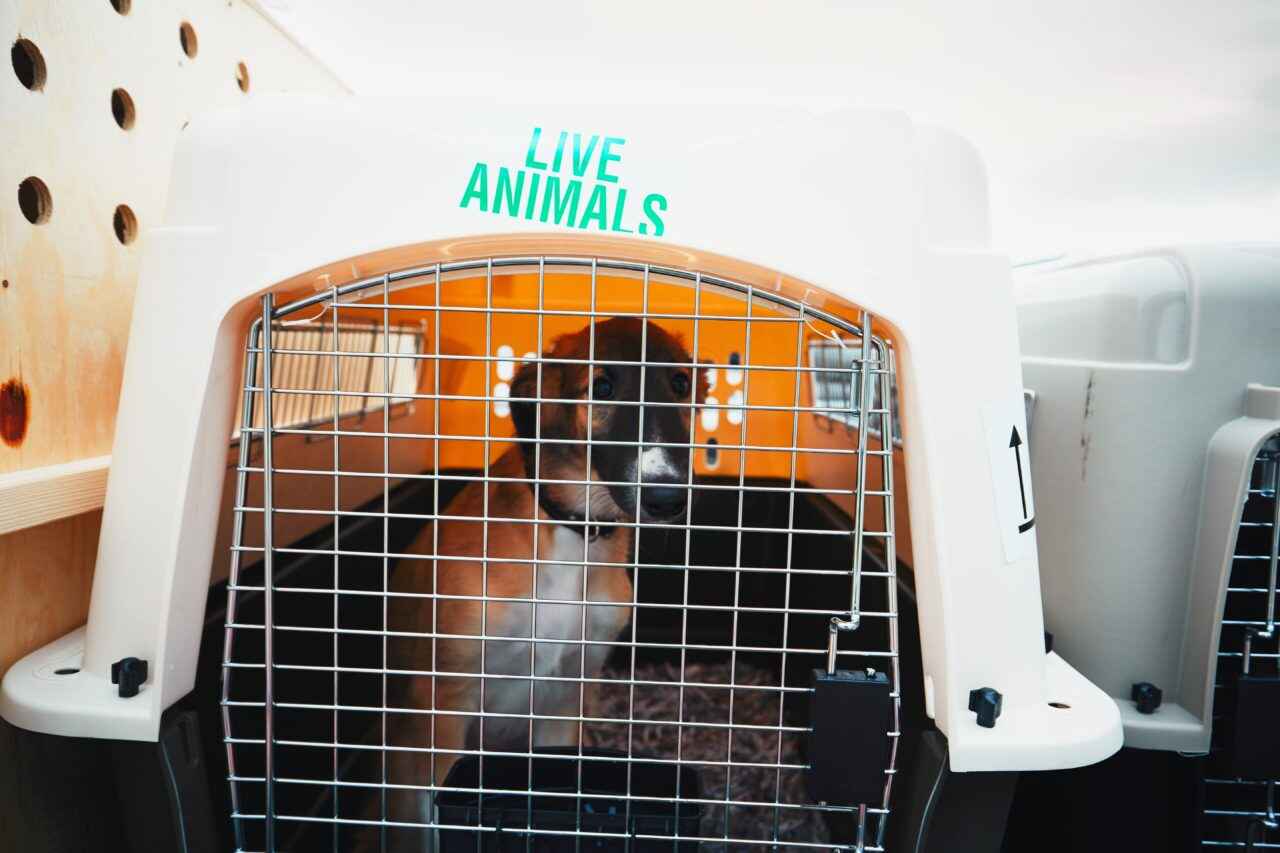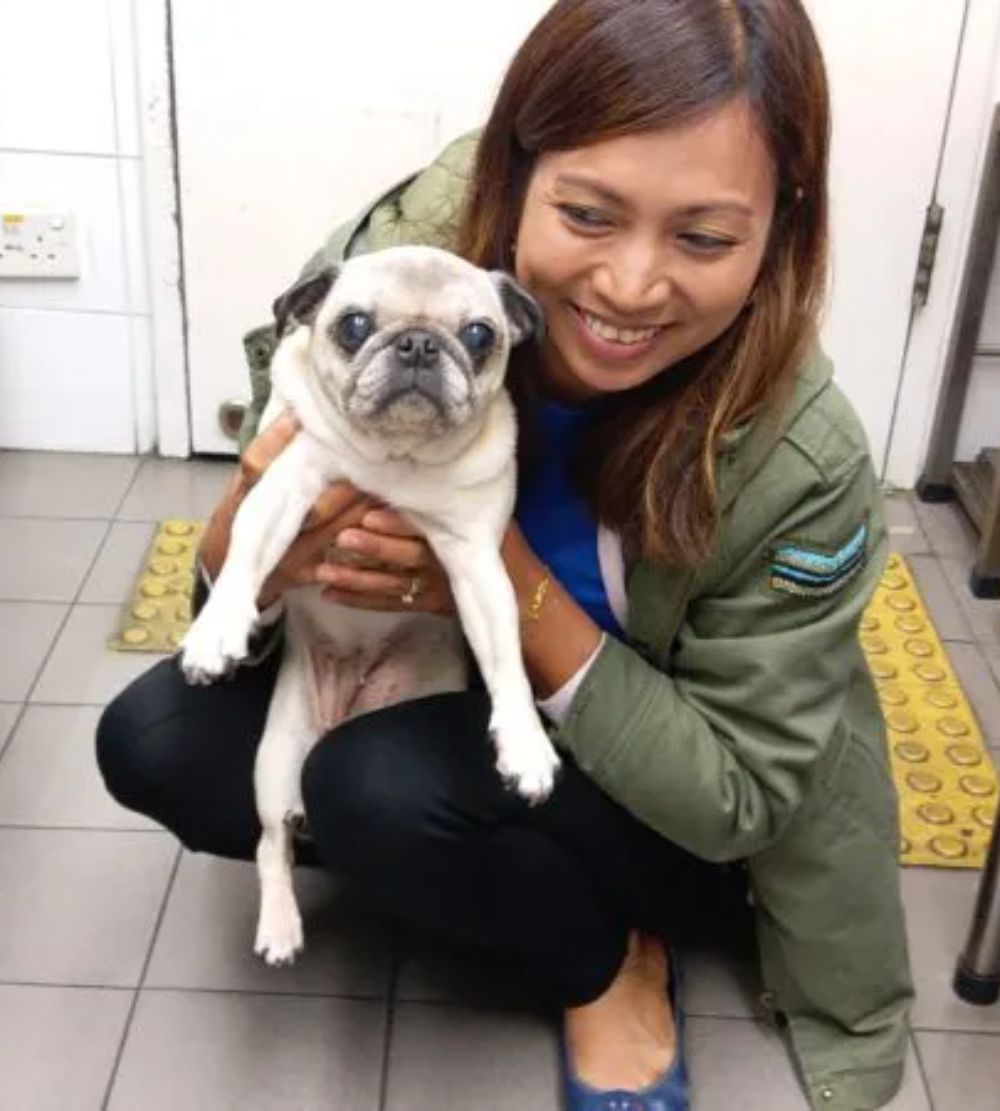HOW TO CRATE TRAIN YOUR PET READY FOR TRAVEL….
Crate training is one of the most important elements to consider when planning a safe pet move. When the pet, either dog or cat, is comfortable in their travel kennel, it will ease the anxiety of both the pet and the owner. There are a few things to take into account when crate training and as such we hope that you will find the information below useful.
Remember to always make the crate training a positive experience and hence the crate should always be associated with positive behaviours and not used as a punishment.
Which crate? …size matters!
Choosing the correct crate is very important. When flying internationally, airlines will have specific requirements so an IATA approved crate is essential. Ferndale will supply crates and deliver them in advance of your pets’ travels to help with the acclimation, if required. The earlier you can provide a crate for your pet to start training the better.
Having the correct size crate is very important for the pets travel comfort. The crate must be well ventilated with room to stand up, lie down and turn around. Too small and it will be uncomfortable but too large and the pet may soil one end of the crate without ruining the bedding which could then encourage future accidents in the crate. Ferndale can arrange a crate of the appropriate size based on the pet measurements that you supply. When measuring the pet, measure the length from nose to the base of the tail, the width across the shoulders and the height from floor to the top of the head (taking account of any standing up ears so that they do not touch the roof of the crate.)
Slow and steady…
Good training takes time and you will do well to gradually ease your pet into the crate without trying to rush things. Training can take days or weeks and very much depends on the temperament, age of the pet and past experience. A gradual introduction will build trust and give the pet a more positive experience, taking away some of the anxiety that a new crate will bring. Training should always be a pleasant experience and done is small doses.
Start by placing just the lower portion of the crate in the living room or other common area that the pet regularly uses. Once the pet is used to the lower portion of the crate, the top can be added and in due course, the door, but try to allow the pet plenty of time to get accustomed to each phase before adding the next piece of the crate.
Home comforts such as a familiar blanket, toys or treats can be placed inside the crate to encourage the pet to go inside to explore and feel at home.
The pet can also be fed inside the crate. Start by putting the food just outside the crate or just inside if the dog is already getting more comfortable inside the crate. Gradually move the food further back as the pet gets more comfortable going in and out of the crate. Try closing the door while the dog is eating and initially open it as soon as the dog finishes. Gradually leave the door closed for a few minutes longer after each meal. If the dog whines, you may have moved ahead to quickly and should go back a stage. However, if the dog continues to whine at this point it will associate the door being opened when it whines so in this case you should wait for the dog to be quiet before letting it out again.
Trial runs for dogs:
Once your dog is relatively comfortable with their crate, try putting the dog in the crate with the door closed while you go out for short periods of time. Gradually extend the time away and hence the length of time spent in the kennel. When you return, always take the dog outside to go to the bathroom so that it will associate bathrooms breaks with being outside and hence will not go inside the crate.
You can also load the crate and the dog into your car to go for short rides, perhaps to a favourite park. This will help your dog have happy, positive experiences when traveling. Rewarding good behaviours with treats, verbal praise and affection will help you win every time!
You can also encourage quiet times and nap times inside the crate when you are home. Always offer treats and praise when your pet enters the crate.
Have patience….
Crate training can take a while but with patience, and lots of praise and rewards, any dog young or old can learn to accept and even love their crate. It will become a “safe place” for your pet when travelling while all around them are strange sounds and smells.
Finally, it is very important to note that the crate should never be used as a punishment. It should be used to encourage peace and happiness, and be a place of security and comfort.
Finally, feel free to contact our team for more details, or come to our facility to see and try out different crate sizes for your pet. Ferndale can deliver crates to your home also.



